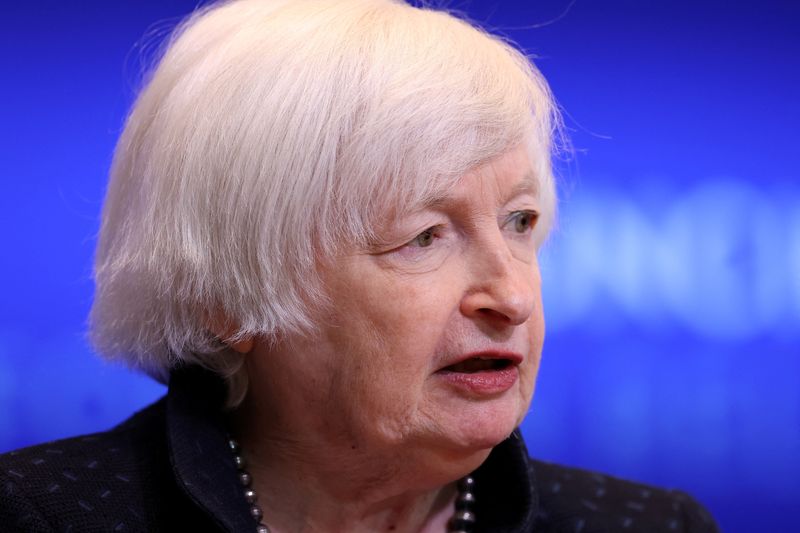By David Lawder and Ismail Shakil
WASHINGTON (Reuters) -U.S. Treasury Secretary Janet Yellen said that the government will reach its statutory borrowing limit on Tuesday and begin employing "extraordinary measures" to keep from breaching the cap and risking a potential catastrophic default.
Yellen, in a letter on Friday to congressional leaders just three days before the Biden administration turns over U.S. government control to President-elect Donald Trump and his team, said the Treasury would begin using extraordinary measures on Jan. 21.
"The period of time that extraordinary measures may last is subject to considerable uncertainty, including the challenges of forecasting the payments and receipts of the U.S. Government months into the future," Yellen said in the letter.
Yellen said the Treasury would suspend investments in two government employee benefit funds through March 14, to claw back borrowing capacity under the $36.1 trillion debt ceiling. As of Thursday, the Treasury reported borrowings of $36.08 trillion.
The move will suspend new investments that are not immediately required to pay benefits from the Civil Service Retirement and Disability Fund and the Postal Service Retiree Health Benefits Fund. Once the debt limit is increased or suspended, the funds are required to be made whole.
Yellen said there was "considerable uncertainty" over how long the measures would last and urged Congress to raise or suspend the debt limit "to protect the full faith and credit of the United States."
TRUMP'S PROBLEM
In late December, Yellen had said that the debt cap would likely be reached between Jan. 14 and 23 after Congress opted against including an extension or permanent revocation of the limit in a last-minute budget deal near the end of the year.
Trump himself had urged lawmakers to extend or repeal the debt ceiling and later blasted an earlier failure to do so in 2023 as "one of the dumbest political decisions made in years."
But many Republican lawmakers view the limit as an important leverage point in fiscal negotiations.
The debt ceiling issue presents an early challenge to Yellen's expected successor, Trump Treasury pick Scott Bessent. The hedge fund manager told a U.S. Senate confirmation hearing on Thursday that the ceiling is a "nuanced convention" but if Trump wants to eliminate it, he would work with Congress and the White House to make that happen.
The Treasury has a number of extraordinary balance sheet measures it can employ to avoid default, which budget analysts say could last several months, depending on the strength of tax revenues.
Ultimately, failure to raise, suspend or eliminate the debt limit could prevent the Treasury from paying all of its obligations. A default on U.S. default would likely have severe economic consequences.
A debt limit is a cap set by Congress on how much money the U.S. government can borrow. Because the government spends more money than it collects in tax revenue, lawmakers need to periodically tackle the issue - a politically difficult task, as many are reluctant to vote for more debt.

The debt ceiling's history dates back to 1917, when Congress gave the Treasury more borrowing flexibility to finance America's entry into World War One but with certain limits.
Lawmakers approved the first modern limit on aggregate debt in 1939 at $45 billion, and have approved 103 increases since as spending outran tax revenue. Publicly held debt was 98% of U.S. gross domestic product as of October, compared with 32% in October 2001.